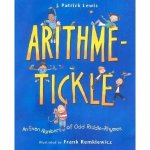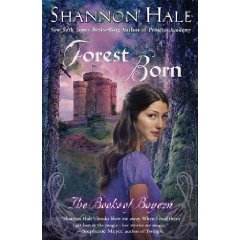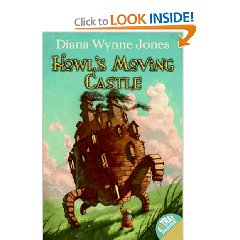In my last post I began listing some children’s books on math that I read for a class. I thought it would be better to break up the list instead of having one huge post. I’ll add the last set of books in my next post. On to the books…
 A Million Dots by Andrew Clements
A Million Dots by Andrew Clements
In A Million Dots, tiny dots the size of a period are used to show, over 46 pages, just how much a million is. They start out with just ten, then 100, 500, and 1,000 dots. On each page in the sequence of one million dots is an illustration covered in dots, with a fun fact relating to the total number of dots so far. Dot number 675,000 is a picture of Hershey’s bars. “To eat 675,000 Hershey’s bars, you would have to eat one bar every two minutes, nonstop, for more than 234 days!”
While I think this book is interesting and I liked the fun facts, I think there are better books for demonstrating the concept of one million. How Much is a Million? comes to mind, but maybe that’s because Steven Kellogg is one of my favorite illustrators. Grades 1-5
Arithme-Tickle: An Even Number of Odd Riddle-Rhymes by Patrick Lewis 
Arithme-Tickle is full of rhymes and riddles involving math. Each poem is a word problem involving addition, subtraction, multiplication, or division. The solution to each poem is written backwards at the bottom of the page. This would be a great book to use for a quick mental math or warm-up activity in upper elementary grades.
Poetry and math? A win and a win for me. And these are actually fun problems, not the boring ones that so often accompany math curricula to be used as warm-ups. Grades 3-5.
 Museum 1 2 3 by the Metropolitan Museum of Art
Museum 1 2 3 by the Metropolitan Museum of Art
In this book of counting one to ten, the MET uses a variety of works of art. A question is posed regarding a painting, such as “How many kittens follow their mother?” On the following page is the answer in numeral and word format, as well as four additional artworks that represent the number. For example, the paintings for number eight have eight boats, eight vases, eight horses, and and eight-pointed star. An index in the back lists the title and artist of each work.
Museum 1 2 3 is a great introduction to counting. It also provides practice in observing an illustration. The objects in each work that represent the number are not always obvious so children will have to examine each painting carefully. The size of the book is rather small, making it a poor fit for a whole-class read aloud because kids in the back won’t be able to see the pictures. I’d use this in small group so kids can see the details. ECE to Kindergarten.
In this book of counting one to ten, the MET uses a variety of works of art. A question is posed regarding a painting, such as “How many kittens follow their mother?” On the following page is the answer in numeral and word format, as well as four additional artworks that represent the number. For example, the paintings for number eight have eight boats, eight vases, eight horses, and an eight-pointed star. An index in the back lists the title and artist of each work.
Museum 1 2 3 is a great introduction to counting. It also provides practice in observing an illustration. The objects in each work that represent the number are not always obvious so children will have to examine each painting carefully.












